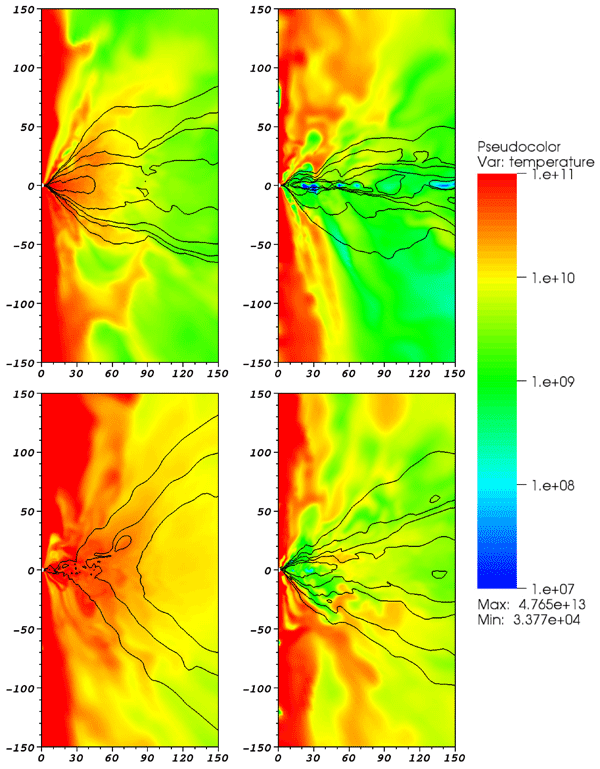 |
|
Figure 14: Pseudo-color plots of
 with contours of with contours of  from four different general
relativistic MHD simulations. The simulations all begin with the same initial conditions, but have
different energy conservation and cooling treatments: The upper-left panel conserves internal energy
and ignores cooling; the upper-right panel conserves internal energy and includes cooling; the
lower-left panel conserves total energy and ignores cooling; the lower-right panel conserves total
energy and includes cooling. The very different end states illustrate the importance of properly
capturing thermodynamic processes. Image reproduced by permission from [101], copyright by AAS. from four different general
relativistic MHD simulations. The simulations all begin with the same initial conditions, but have
different energy conservation and cooling treatments: The upper-left panel conserves internal energy
and ignores cooling; the upper-right panel conserves internal energy and includes cooling; the
lower-left panel conserves total energy and ignores cooling; the lower-right panel conserves total
energy and includes cooling. The very different end states illustrate the importance of properly
capturing thermodynamic processes. Image reproduced by permission from [101], copyright by AAS. |
- Home
- Articles
sidebar
"Foundations of Black Hole Accretion Disk Theory"
Marek A. Abramowicz and P. Chris Fragile

